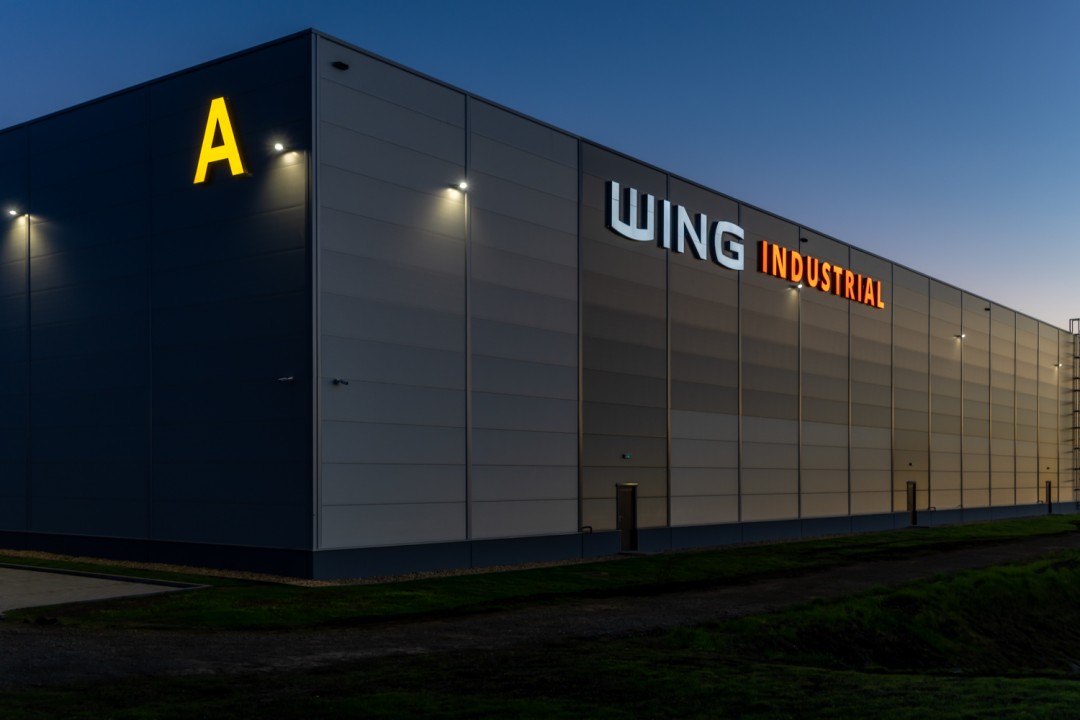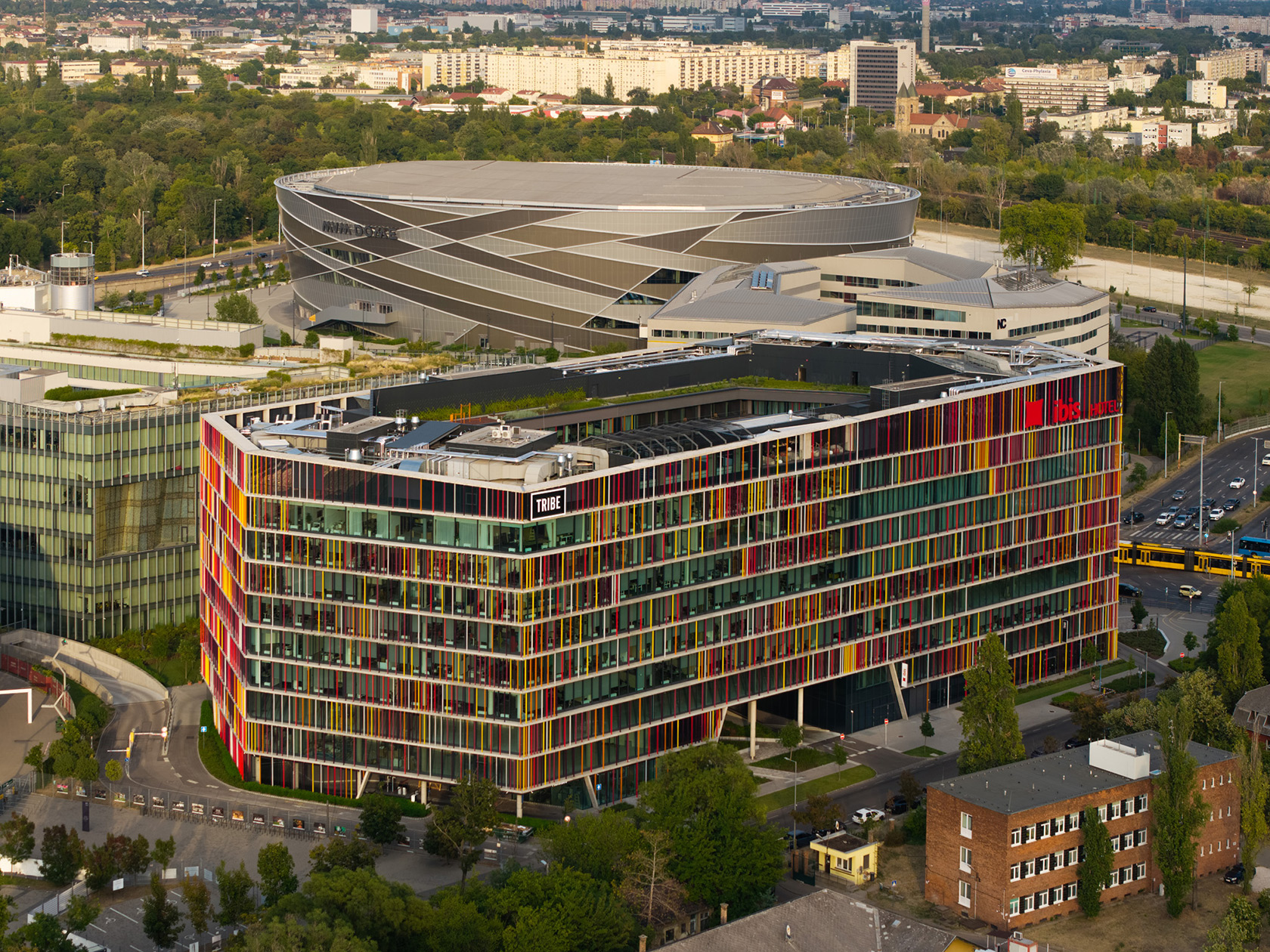Zsófia Korda: beyond risks, 2023 is about opportunities and reorientation
2023-03-14
WING Zrt.'s Corporate Sales Relations and Business Development, Chief Sales Officer (CSO) believes that, like any challenging period, this one will have its winners. She says that the fact that speculative developments are continuing despite the market turbulence is a clear sign of confidence in the sector and secure demand. We discussed the fine-tuning of logistics services, energy prices, the potential of 20-year-old buildings and ESG - among many other exciting topics.
Is the industrial property/warehouse sector really last year’s big real estate winner? What do you think?
Basically yes, but it is a bit more complex than that, so let’s go back in time a little. In early 2020, various segments of the real estate market were affected in different ways by the pandemic, giving an enormous impetus to industrial and residential sectors. For several years before that, there had been no speculative industrial developments, so the new annual supply of almost 400,000 square meters smashed records both in 2021 and 2022. And this supply was fully absorbed by the market, with vacancy levels remaining very low. But nothing lasts forever. We had to face a new challenge in early 2022. After the pandemic many of us felt that we deserved a quieter, more predictable period with economic and geopolitical stability. However, the way the Russia-Ukraine war escalated, along with the energy crisis that resulted from the international sanctions against Russia and dependence on other energy sources, fundamentally redefined the technical and technological expectations towards the sector. Just like everywhere else, the drastic rise in energy prices affected the market immediately.
Last year, our energy management and planning, which we had worked out years in advance, created a real advantage for us. And as a result, our tenants faced only minimal price increases. And although building regulations would have allowed us to deliver halls with a lower level of insulation, in line with its usual practice and as part of the standard technical specification, WING Industrial continues to develop halls with a higher level of insulation providing a minimum indoor temperature of 16 °C. For new inquiries, the unit price of energy was important, as this is also priced by the tenants in their products and tenders as part of their operational costs.
All in all, considering the development volume of the industrial sector last year and its high occupancy, including the almost 100% occupancy rate of our existing portfolio, in my opinion WING Industrial performed very well in 2022. And this is true for the entire industrial sector, which is really one of the most resilient segments.
What is driving the market right now? Is it still e-commerce and automotive industry suppliers?
Maybe the most important thing is that in spite of all the external circumstances, speculative developments haven’t stopped. This is supported by the obvious needs on the demand side and also indicates the trust developers have in the industrial segment.
WING Industrial currently has an industrial portfolio of 300,000 square meters and a further development potential of about 200,000 square meters at four locations in the north-eastern and southern regions of the area surrounding of Budapest. East Gate Business Park, East Gate PRO Business Park and Login Business Park in northern Budapest, as well as Airport City Business Park in the south all play a dominant role in the markets of that region and are operating continuously with almost 100% occupancy. So we did not hesitate for a moment to continue our developments on a speculative basis, in line with our practice in recent years. The first two halls of East Gate PRO Business Park have a combined floor area of about 20,000 square meters and were delivered in the third quarter of 2022. This will be extended in the third quarter of 2023 with another, almost 10,000 square meters of hall space suitable for production, assembly, fulfilment and warehousing. In addition, we have developments of about 40,000 square meters now being prepared in the northern and southern regions.
The dominant activities in each region are different. We all recognise that capital from Far East is still flowing into the country in significant amounts. Obviously, factories established in certain regions of the Budapest's catchment area determine the demand side locally and, over time, require the presence of supplier groups related to a particular production. On the whole I do believe that both e-commerce and automotive industry suppliers, as well as companies in manufacturing will generate continuous needs on the demand side, even if the volume is lower than during the pandemic. There is clearly more demand in the southern regions for companies providing logistics services.
How have tenants demands and expectations changed? The price of construction materials and construction costs have both dramatically increased in the past few years, although rental fees have gone up only slightly. How can the sector handle this, on top of rising energy costs?
The current geopolitical situation means that the age of the global supply chains is over, at least for now. The pandemic accelerated this process, and the war has further aggravated the situation. The surge in transport costs is a significant item in this sector. The vulnerability in terms of materials has typically increased in all sectors rather than decreased. Today, production of an end product from 40 countries are not marketable. Shortening the supply chains is a crucial aim, not least because of the shorter delivery times expected on the consumer side. Relocating manufacturing to nearshore locations preferably with the same defence, political and economic system is also a consideration. And one of the most basic conditions for all this is the availability of energy and skilled labour. Location itself is important, but whether the location in question has the required labour force and energy is just as important.
In addition, tenants generally expect new buildings to be environmentally friendly, which practically means that they not only need to be sustainable, but also cost effective (lower operational and utility costs), and able to ensure operational security. The latter means that operations should be supported by diverse energy resources. Developers are making efforts to meet these expectations against a backdrop of soaring inflation and tighter financing conditions, among other things. Obviously, we are increasingly focusing on more rational architectural solutions and cost optimisation, but on the whole, an increase in the rental fees for developments that meet these new demands will be unavoidable.
Is ESG a priority in the sector?
I just love this question. It is a priority everywhere. The question is what, when, for how much and in what time frame and also what expectations are associated with all this from the investors side? Also, beyond the fact that we are obviously investing in a liveable future, where, for whom and when will all this pay off? These factors are all parts of the big picture.
In addition to the commitment of companies and beyond the expectations of the regulatory environment, ESG has clearly been given a new impetus by the energy crisis. The formula is very simple: it’s better if it is more expensive than not to have it. Operating in line with sustainability principles was less crucial when the energy market was essentially stable, even though medium and long-term expectations in this context had already appeared. The past year has completely disrupted this, and not only in terms of being profitable, but also. to ensure that the operation itself is secured at all.
To address this issue, we need to distinguish between the existing portfolio and new developments. For 10-20 year-old buildings that are still of excellent quality, the first question is what are they capable of in their current state? Then the second question is with certain investments - both on paper and in practice - what rating and efficiency can they achieve? Examining this is a priority for us. With new deliveries, there’s no question of taking into consideration the tenants’ and investors’ ESG expectations during planning.
What do you expect in 2023?
As a result of its role in the real estate market, WING is in the privileged position of being able to experience and evaluate events first hand in all segments. And, let me add, that this is not the first time in the past 20 years that this has been true. I wouldn’t call 2022 the year of challenges for the industrial sector. That rather will be in 2023. The challenge in 2023 is to prepare for the future by taking realistic risks in the current turbulent and inflationary environment, and to maintain the success we have achieved so far. WING Industrial’s portfolio was characterised by an almost 100% occupancy rate both in the years following the 2008 crisis and during the pandemic. Beyond risks, the current period is also about opportunities and restructuring. It goes without saying that energy dependence will remain. Only its direction and costs have changed. And, like any challenging period, this one will also have its winners.
Translated from the original article on raktarkereso.info: https://www.raktarkereso.info/cikkek/interjuk/korda-zsofia-ez-az-ev-a-kockazatokon-tul-a-lehetosegekrol-es-az-ujrarendezodesrol-szol






